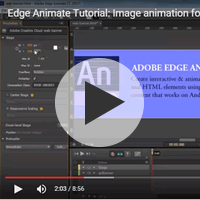Web Design Trends To Look Out For

The design industry has always been an ever changing landscape of thoughts, opinions which often leading to trends that are rarely evergreen. The digital explosion brought with it a new era of tools and workflow processes that are constantly being expanded to ensure optimum efficiency for design professionals of all capabilities.
It’s always difficult to predict which trends will attract the most attention, we have looked back to the ones that have proved most popular in the first part of 2016 and it is likely to continue throughout the year.
Collaboration Tools
Group chat evolved in the age on instant messaging and we have been embracing it for near on a decade now. Traditionally, we have been using them in plaintext and by attaching files.
However, the ability to share live design documents within these chat applications is beginning to emerge. There are examples, such as Notable, where everyone in a team can layer comments and annotations for efficient collaborations.
Rumour has it that Slack is going to introduce extensions that build upon its features that are already similar to Notable. Users have voiced their opinion that they want to see it tie into applications such as WordPress and Mailchimp.
Card Layouts
We have Pinterest to thank for this trend, and works particularly well for those pages that are content heavy. This layout works well on pages with lots of data because it makes it scan-able; there are free plugins like jQuery Masonry that mimic the layout with animated cards and are available for a range of sizes.
Many online magazines use these dynamic grids to focus the content to its bare bones, and Google Now uses a card layout to advertise content cards for the app.
Product Previews
As the internet becomes more saturated with users, businesses and content there is a battle going on when it comes to engaging customers visiting landing pages. We saw image heavy and interactive content grow rapidly in popularity in 2015 as it created a platform for user generated content to be easily created and used to a brands advantage.
The next step on this front was to introduce video tours and product previews giving the user an insight into how the product functions without actually having to sacrifice their time by demoing it themselves. If you don’t want to use videos, you could use screen shots in a PNG format to showcase the product and a user journey.
Learning Code
Coding is no longer in the shadows! It’s in the big wide world and everyone from school children to retirees are taking an interest. With this in mind, it should come as no surprise that there has been a distinct rise in designers learning to code. Although this is a divisive area, some feel writing code is not in their job specification while others feel compelled to learn.
It’s likely that the debate will continue long into the year, if not beyond, but surely a continuing cycle of learning is a good base for personal and professional growth?
Touch Support for Websites
There is reported to now be 1.5 billion mobile internet users across the globe, and 80% of these are browsing using a smart phone. Thanks to the Google Hummingbird update, businesses were strongly urged to make their sites mobile responsive to avoid Google penalties and web traffic substantially slowing.
In the wake of this, more and more websites have implemented custom features and plug-ins to support touch events. Photoswipe is just one of the plug-ins on hand to support swiping and tapping and as a result of this, we are seeing developers building not only responsive websites, but touch enabled sites too.
This is of course, only a brief glimpse into all of the wonderful things taking shape within the design industry and creative minds enter overdrive and ideas become ripe. I think the collaboration aspect is perhaps the most exciting because it encourage you to nurture your level of self-awareness as you are forced to articulate your competencies and decisions. It reinforces to ourselves the strengths and weaknesses that we possess and how to build upon them. Leveraging these resources also builds stronger relationships and future connections – all in all it is almost guaranteed that you will take positives away from the experience!

 0345 363 1130
0345 363 1130 info@xchangetraining.co.uk
info@xchangetraining.co.uk




